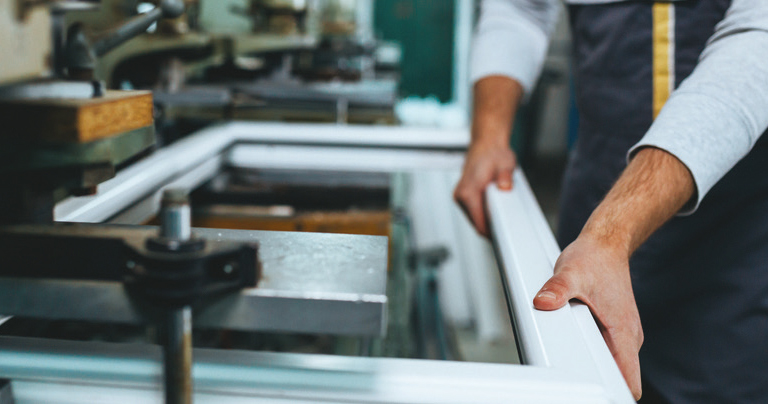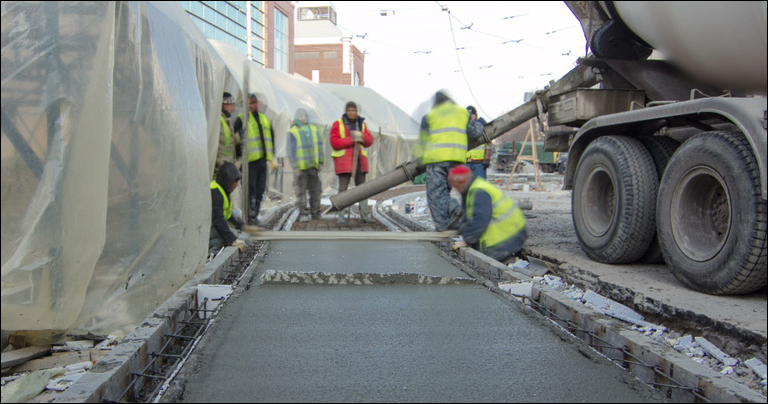Keeping worksites threat-free
By Edit Team | May 16, 2019 8:39 am SHARE

Preventing risks like fire outbreak, theft, austere weather conditions etc., entails better planning that makes construction business economically viable.
The construction industry in India has remained an unorganised sector barring a few tops of the line construction companies based in metro cities. The most common risks include, fire, accident, intrusion, theft, weather risks, natural calamities, extortion and sabotage by criminal gangs and rivals. There are many hazards on construction sites that can put scheduled completion at risk.
A holistic approach towards risk management
“The key safety and security considerations enables building contractors and principals to have a proactive risk mitigation plan against all threats,” says Ashish P. Dhakan, MD & CEO, Prama Hikvision India Pvt Ltd.
The physical security risks at construction site comprise of intrusion, unauthorised access, material theft, labour disputes, criminal attack, vandalism and destruction of machinery. Though safety and security risks appear to be the same, but they are distinctly different in nature and impact. The key occupational health and safety risks includes, working at height, moving objects, slips, trips, falls, hand arm vibration syndrome, material and manual handling, collapse, asbestos, airborne fibres and materials- repertory diseases.
Builders and construction companies are often confronted with a wide range of risks. These risks can be of external or internal origin, an outbreak of fire, extreme weather conditions, theft and destruction of property. Material defects or improper conduct by construction workers can have an equally serious impact and lead to unforeseen physical damage to property on the construction site.
High-safety standards at worksite is crucial
Government is committed to regulating all economic activities for management of safety and health risks at workplaces and to provide measures to ensure safe and healthy working conditions for every working man and woman in the nation.
“Government recognises that safety and health of workers has a positive impact on productivity, economic and social development. Prevention is an integral part of economic activities as high-safety and standard at work is as important as good business performance for new as well as existing industries,” says Vijay Kalantri, Chairman & Managing Director, Balaji Infra Projects Ltd.
Failure to recognise the hazards associated with chemicals can cause chemical burns, respiratory problems, fires and explosions.
Many workers are fatally injured every year while operating powered industrial trucks. Forklift turnover accounts for a significant number of these fatalities. It is imperative to train and certify all operators to ensure that they operate forklifts safely and properly maintain haulage equipment, including tires.
“Serious head injuries can result from blows to the head. Workers must wear hard hats where there is a potential for objects falling from above, bumps to their heads from fixed objects, or accidental head contact with electrical hazards. All construction workers must be provided with Personal Protective Equipment (PPE) as a protective gear to be compulsorily used at construction sites,” adds Kalantri.
Risk factor
In construction activities, the most common risks to safety are moving objects whereby the path of moving objects is not cordoned off, due to construction noise levels one can develop hearing disability, respiratory diseases due to dust and various airborne fibres, etc. Risk of unintended collapse wherein a person does not anticipate the threat during performing demolition activity and risk arising out of usage of equipment without adequate training, according to Niraj Bhatia, Head – Strategy, Contracts and Procurement, Viiking Buildinfra Pvt Ltd.
Other common risks are in the areas of electrical work, working on heights without proper harnessing, industrial diseases related to nerves and joints due to prolonged work on vibratory power tools or ground work equipment.
Efficient safety management
Managing risk is a challenge at the best of times but is even more difficult without a system in place which helps in making assessments quickly and efficiently. Efficient safety management system ensures the safety of the site and reduces the time and money spent on site inspections, says Kashyap.
Some of most common risks to safety in construction are:
Falls
Falls from heights leads to several accidents in sites so in order to protect the employees, ensuring that ladders and scaffolds meet safety standards and are properly sized for the project requirements and work surfaces are stable, free from holes and provide proper traction. It’s always important that employees have the right personal protective equipment (PPE) such as hard hats, non-skid work boots, and tool lanyards. Barrication of work zones/pits are compulsory in the sites.
Moving objects
Construction sites are never static and are always changing environment. Safety risks associated with misused or malfunctioning cranes is always identified during regular inspections and necessary actions are taken to prevent mishaps. All cranes are certified with third party load test including fitness check for the application which is to be deployed at site. All trucks and construction equipment running at site are fitted with reverse horn in order to avoid any accidents. All plants are installed with one press stop button for the entire plant in case of emergencies.
Hazardous materials
Construction sites are often filled with hazardous materials that can range from toxic airborne materials which affect respiration to chemical spills which can burn or release toxic fumes. To prevent exposure, the company provide its workers with material safety data sheets (MSDS) for any hazardous chemical being used at the construction site provide proper Personal Protective Equipment (PPE) including respiratory protection. Regular training is always provided on site for the proper handling of hazardous materials.
Electrical hazards
Accidents happen in sites due to electrical hazards, so one must ensure that its employees are using proper safety equipment, overhead power lines and are familiar with the minimum safe distance requirements. All switches and gadgets are used as per safety norms and the safety parameters prescribed.
Safety protocols at site
Safety of workers is given prime importance in the site. Regular safety trainings which includes safety talks and awareness, as well as live demonstrations and Mock Drills which safeguards our workers from all the impending dangers in the construction site. The trainings educate workers about the Do’s and Don’ts in sites with regards to safety.
Use of temporary signs in construction sites
Signboards are placed in sites for informational purposes, safety of the workers, proper notification of closures and for pedestrian or vehicular traffic changes.
Protocols for making operations safe and secure at construction sites
There is an increased focus on construction site safety and security management due to rise in incidents of crime, material theft, accident and vandalism. The standard operating procedures (SOP) and protocols needs to be defined and followed as per the risk assessment report prepared by a credible professional risk consultant.
More deployments of advanced IP and HD video surveillance cameras, access control, biometric time and attendance, intrusion alarm systems are visible due to increasing threats. The solution lies in a structured and systematic approach to securing the unorganised construction sector in a phased manner. The biggest concern for developers is to complete the construction project on time. To enable this, system integrators and consultants need to work with developers to show them that construction site security can make a tangible difference.
Hikvision security solutions
The real estate sector across India is experiencing a surge in demand for electronic security systems due to rising security concerns and enhanced security awareness. The emerging threats from criminals and anti-social persons, are forcing construction and infrastructure companies to opt for enhanced site security measures like video surveillance, biometrics, access control, Under Vehicle Surveillance System (UVSS), intrusion alarm system, etc. “With the technology evolution new breed of IP & HD cameras and NVRs are available to secure the construction sites and multisite monitoring is possible from a centralised location,” says Dhakan.
With video surveillance and other security systems, builders and developers can ensure security and safety of construction workers and engineers on the site. They can reduce liability arising from theft of material and construction tools. The construction site security solutions can help to deter crime and stop vandalism.
The construction companies often face the losses due to theft of construction material as most construction sites are open and unprotected, round the clock monitoring of these sites is a tedious task. There is a constant risk of casualties due to an accident in the harsh working environment of a construction site. The construction workers need to adhere to the best practices of safety and security guidelines. For safe and secure construction site environment video surveillance has become the need of the hour.
Training and protection necessary
Workers must wear sturdy, non-skid work boots and use tool lanyards when working on scaffolds to prevent slips and falls and to protect workers below. A competent person should provide training to all employees and workers that might be exposed to hazards at site.Workers should be provided with and wear helmet, face and eye protection when there are hazards present from falling objects, flying particles, liquid chemicals, chemical gasses or vapours, or potentially injurious light radiation while welding, chipping, grinding, masonry work, sanding, woodworking and drilling, informs Bhatia.
Key considerations enable building contractors and principals to have a proactive risk mitigation plan against all threats.
Ashish P. Dhakan, MD & CEO, Prama Hikvision India Pvt Ltd.
Efficient safety management system ensures the safety of the site and reduces the time and money spent on site inspections.
Ratan Lal Kashyap, Sr. Vice President –Procurement, G R Infraprojects Ltd
All construction workers must be provided with personal protective equipment (PPE) as a protective gear to be compulsorily used at construction sites.
Vijay Kalantri, Chairman & Managing Director, Balaji Infra Projects Ltd
Risk of unintended collapse wherein a person does not anticipate the threat during performing demolition activity and risk arising out of usage of equipment without adequate training.
Niraj Bhatia, Head – Strategy, Contracts and Procurement, Viiking Buildinfra Pvt Ltd.
Cookie Consent
We use cookies to personalize your experience. By continuing to visit this website you agree to our Terms & Conditions, Privacy Policy and Cookie Policy.























































